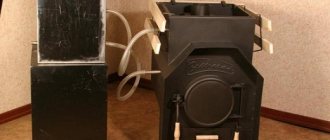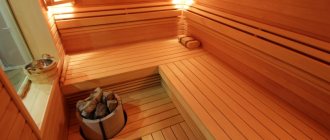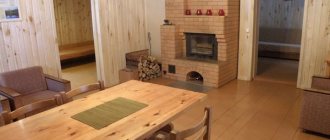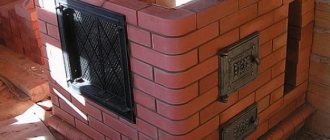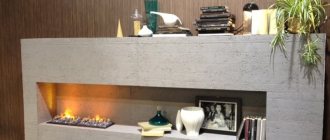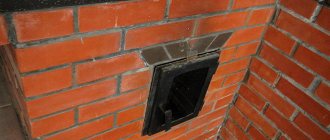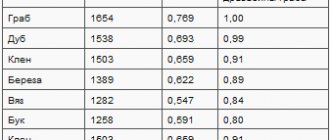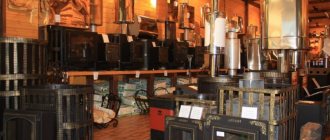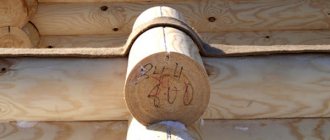In classic saunas, vacationers are heated by air that has been “charged” with temperature from the stove or stones. But today, economical infrared baths, which create heat using carbon or ceramic heaters, are becoming increasingly popular. From this material you will learn about their differences, pros and possible cons, as well as reviews from real people about the operation of a bathhouse with infrared heat.
Let's understand the terminology
Infrared is a type of electromagnetic radiation described by optical laws. That is, the nature of IR radiation is similar to ordinary light. These rays in the spectrum occupy the range between visible (red), with L=0.74 µm (where L is the wavelength), on the one hand, and HF radio emission, L=(1-2) mm, on the other.
This spectrum region is divided into three groups:
- DV - Long wavelength (50.0≤L≤2000) µm;
- SV - Medium wave (2.5≤L≤50) µm;
- HF – short wave (0.74≤L≤2.5) microns.
This radiation occurs in any heated body. Moreover, the higher the temperature of the source, the shorter L and the more intense the IR radiation.
At low temperatures, almost the entire range of such radiation is located in the infrared range. Visually, such a body looks dark. With increasing temperature, the wavelength emitted by the body shifts towards the visible spectrum, passing, successively, red, yellow and, when high temperature values are reached, white. On the one hand, this information is not related to the topic of this article, but on the other hand, it is directly related. It allows you to understand the terminological confusion that IR oven manufacturers allow themselves when describing their products:
- Some call it infrared;
- Others are long-wave;
- Still others are dark;
- The fourth ones are light.
But all of the stoves listed are infrared. And the discrepancy in the names is due to the fact that DVs have a lower external surface temperature, so their IR radiation lies in the long-wave range. Such emitters are often called dark emitters, because At such temperatures, bodies practically do not glow. SV stoves are called gray. Their outside temperature is higher. And HFs are characterized by maximum temperatures and are called light or white. In numbers it looks like this:
- Superdark bodies - (200≤t≤400)°С;
- Dark - (400≤t≤600)°С;
- Catalytic low temperature
- (600≤t≤800)°С;
- Medium temperature light - (800≤t≤1000)°C;
- High-temperature light - over 1000°C.
Infrared oven design
IR sauna stoves are more correctly called heaters, since the principle of their operation is similar to heaters.

These devices have:
- a metal or ceramic heat-resistant rectangular body with appropriate strength;
- an IR lamp is installed in it, similar to a fluorescent lamp (daylight);
- the housing contains a heat-reflecting screen and a heat-insulating layer that protects the housing from overheating;
- a reflector that emits heat;
- panel on which heating elements are mounted.
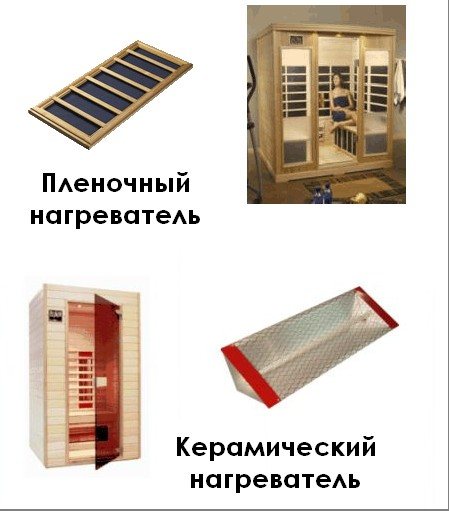
When connected to the mains, the latter become hot. Heat is transferred to the reflector - emitter. The room is warmed up in stages. At first. Radiation zone. Then the air in the room. This ensures even heating.
In modern products, the following elements can be used as a heater:
- ceramic. A plate made of ceramic material into which a high-resistance conductor is built in:
- (nichrome), designed to heat up to a thousand degrees;
- Fechral (with very high resistance) - up to 800°C, respectively.
Due to the specific design features, they are used only in ceiling and wall models. They are not used in floor-standing devices. Average service life – up to 4 years;
- Quartz. They are made from tubes made of quartz glass. They have insulation made with an Al profile, which makes it possible to achieve heat radiation from the entire surface of the plate at once. Many models have several similar heating elements.
The products are designed for seven years of operation;
- Carbon. A tube made of quartz, into which a carbon filament shaped like a spiral is mounted. Vacuum flask. Carbon fibers are heated to 3000°C (while maintaining strength). The type of heating element determines the heating temperature of the reflector plate. Usually this is (200-600)°C. But the maximum heating temperature of the case is ≤ 60°C.
- Film emitters. They are fixed on the entire internal surface of the cabin (walls, ceiling). operating surface temperatures of such a radiator (25-50) ° C. Often used in conjunction with ceramic ones.
Average dimensions of such a device: (1000-1500)*160*40. Weight, depending on the model, (3.5 – 5.0) kg.
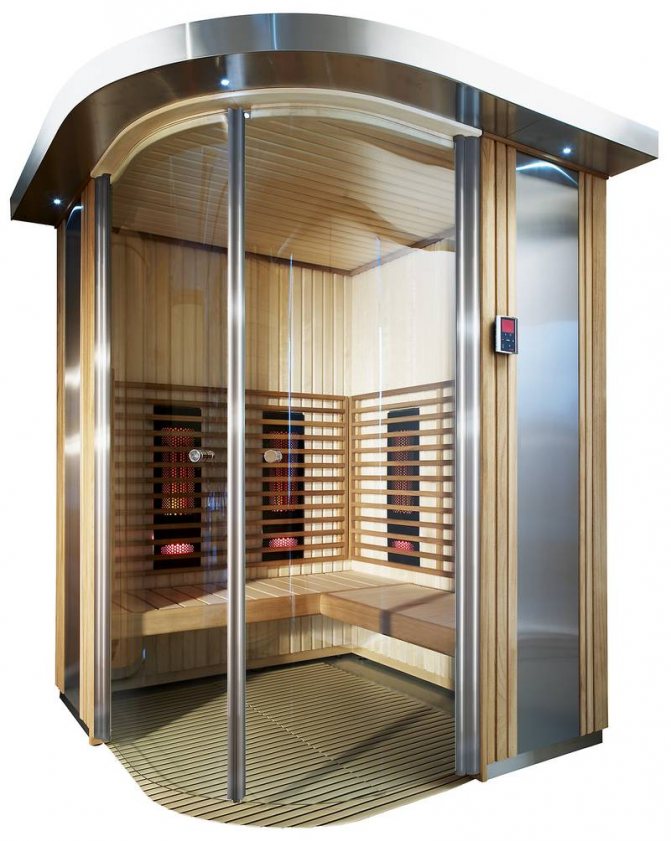
IR heaters are offered to the client in the following configuration:
- Heater assembly;
- Fasteners included (brackets and hardware included).
Everything else needs to be purchased additionally:
- Automatic switches;
- Cable and plug selected for the existing load;
- Thermostat;
- Other components.
Heaters for infrared saunas: comparison
A person who decides to install a cabin with an infrared heater will have to choose its type:
- Ceramic. Allows you to quickly heat the sauna to high temperatures. Works in constant mode. Equipped with a protective housing and grille. Easy to maintain, resistant to mechanical damage. It has high efficiency, but the heating level is limited to approximately 50°C.
- Carbon heaters. They have a more complex device: a quartz tube with a heating element consisting of carbon filaments. When in working condition, they glow with a rich orange-red color. Compared to ceramic analogues, they have a number of advantages. The second version of such heaters is film. This is a flexible heat-resistant film with carbon strips inside.
- Halogen. Cylindrical lamps with tungsten or carbon fiber filament. They operate in the short-wave range and emit light that is too bright for human eyes.
- Quartz. In essence, this is a household quartz heater, only adapted to the needs of the bathhouse.
Attention! Ceramic and carbon models are in greater demand than others.
Installation of IR ovens
Such heaters can be installed:
- On the floor. The downside of this option is that it takes up quite a lot of space. There is a high probability of capsizing due to negligence. Therefore, the devices must be equipped with an automatic shutdown if the heater falls;
- On the walls. More difficult to attach. But this is fully compensated by the safety of this option, its compactness and visual appeal;
- On the ceiling. Requires the most complex installation and adjustment.
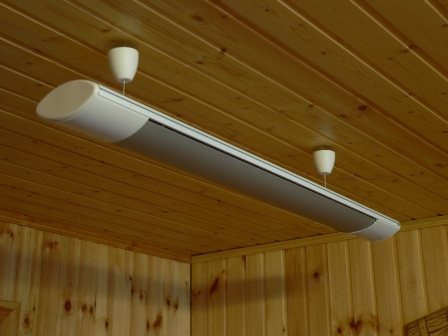
There are options for IR ovens designed for corner installation. They emit in the sector (90-120)°.
To maintain the required temperature, special thermostats are used.
The zone of maximum efficiency of heaters is approximately 150 mm from the body of the steamer. Taking this into account, a vertical wall installation option, in close proximity to the shelves, is considered optimal.
To warm up the legs, one or two heaters are installed at the level of the calf muscles.
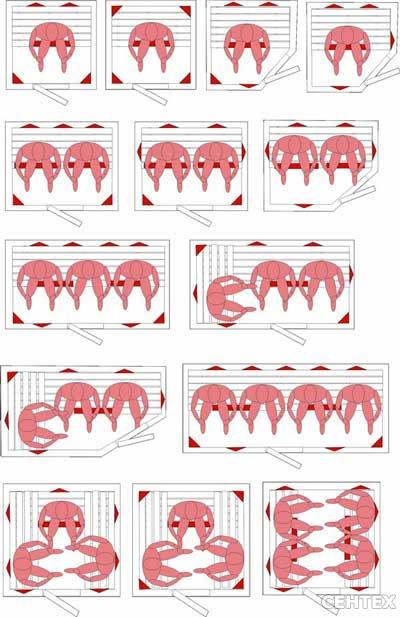
IR heaters working on the chest are mounted in the corners of the sauna cabin.
The optimal power for an infrared sauna is considered to be 350 W (when located at a distance of 150 mm from the body). It is not recommended to install heaters of higher power. At this distance they can cause burns. And at a greater distance, the effectiveness of IR radiation decreases.
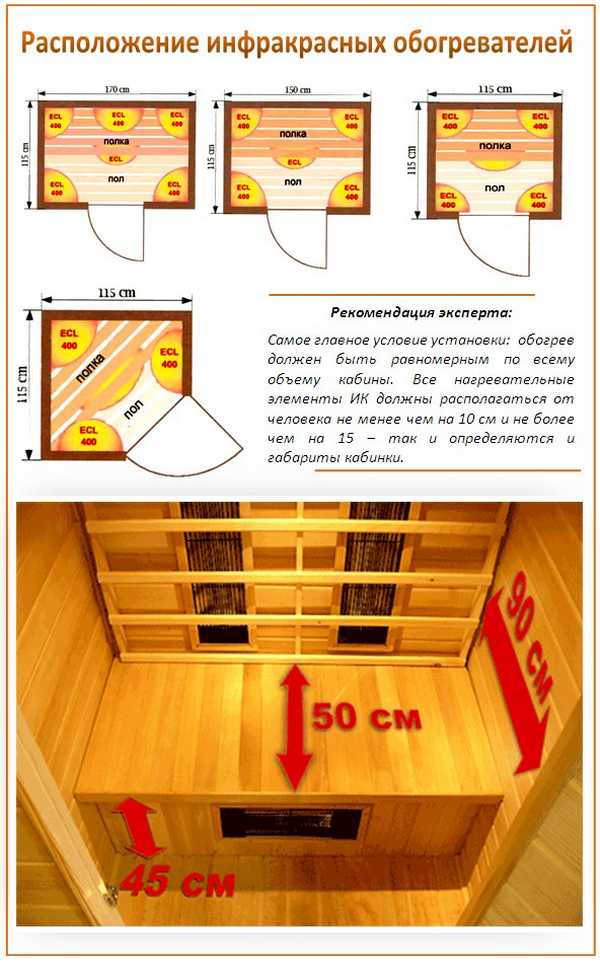
The surface of the installed emitters needs to be cooled. This explains the recommendation to leave 30-50 mm between their rear wall and the enclosing structure of the sauna cabin for the formation of convective flows. This allows the devices to be cooled and reduces the time it takes to warm up the entire volume of air in the sauna cabin.
The ovens are connected to a standard electrical power supply (230V/50Hz) with a current of 15A. No special socket is required to connect the IR sauna cabin.
Advantages of a carbon heater for an infrared bath
Heaters of this type are the most productive for a modern infrared sauna. Before purchasing, please note: each manufacturer must have an appropriate certificate. Equipment of this type is safe, and the material and design allow the owner to receive the following advantages:
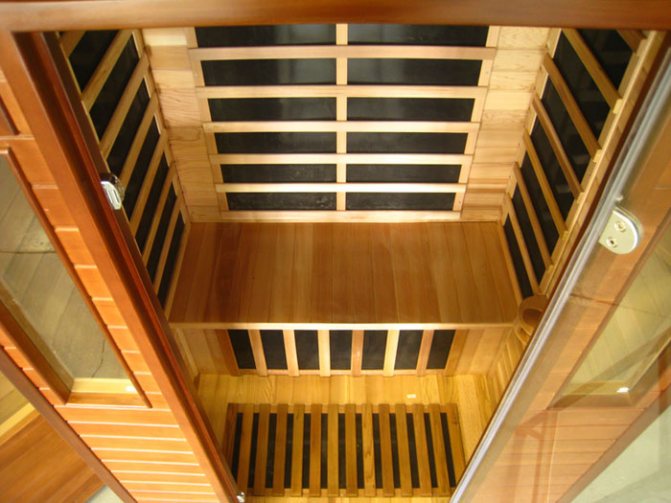
Film heaters
- The air can be heated more strongly, to a maximum level of 55-60°C.
- Heating is controlled using a temperature sensor.
- The heater is equipped with an automatic control system that works in tandem with a temperature sensor, stopping and resuming operation as needed.
- The intermittent type of operation allows you to save up to 30% energy compared to saunas equipped with ceramic heaters.
- A couple of tens of seconds pass from turning on the device until the set high temperature is reached.
- Cover more space.
- They operate within the range of infrared waves, which is most useful to humans.
- They are cheaper than ceramic heaters.
Advice. The amount of power to serve is 1 sq. m of sauna is approximately 1000 W, but it is better to buy a heater with a reserve.
IR oven control
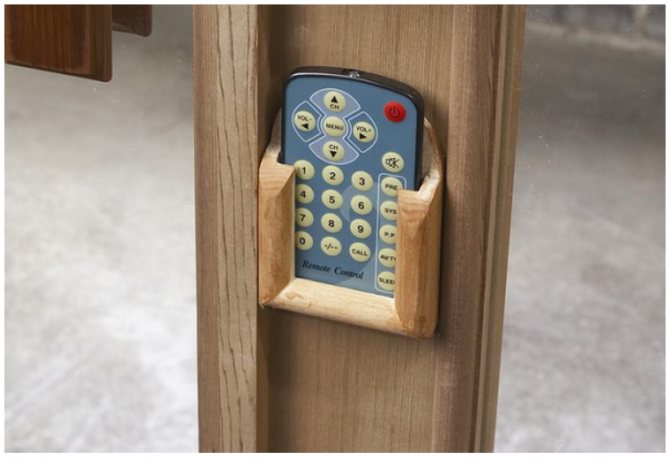
There are 2 control options:
- Provides adjustment of temperature values. The heaters are turned on and off automatically according to commands generated by the DCT (temperature control) sensor. This option does not allow you to completely warm up the body of the person in the steam room;
- Designed to regulate power consumption. These models are designed to change the intensity of IR radiation, which allows you to select the optimal indicator for a particular person. In such a case, the entire human body warms up evenly, gradually and smoothly. This ensures maximum therapeutic effect.
To control IR furnaces the following can be used:
- External control panel located outside the sauna cabin. Allows you to set the radiation power and duration of the procedure. After the set time has expired, the system disconnects from the network automatically;
- Built-in automation unit for regulating the operation of all heating elements. With an average power consumption of 1.1 kW, this product is designed to control 6 IR heaters. Therefore, they are equipped with mini steam rooms for one or two users. For larger saunas, a more powerful (1.5 kW) unit with 8 heaters is recommended;
- Internal remote control for adjusting microclimate parameters to optimal values.
Advantages of IR ovens
Among the main advantages of such sauna heaters are:
- Their compactness makes it possible to equip even small apartment saunas with them;
- Simplicity and convenience of installation and dismantling;
- Autonomy. Such stoves do not require constant human supervision and do not require periodic addition of fuel;
- Minimum warm-up time. A classic oven will heat the steam room to the desired temperature in 1.5 - 2 hours. The IR oven requires ≤ 20 minutes. At the same time, oxygen is not burned out of the air;
- The low temperature of the case allows such heaters to be mounted on surfaces finished with any materials;
- High efficiency. Choosing infrared ovens provides double savings:
- They are cheaper than classic electric furnaces;
- Consumes 80% less electricity.
The choice of an infrared sauna allows those who like to visit steam rooms to arrange them even in their own apartment.
Infrared saunas: reasons for popularity
The activity, described as “warming the bones,” is very popular among the people.
Russian folk baths were replaced by analogues from other countries. For example, in the 90s, Finnish saunas actively integrated into Russian culture. Over the past 25 years, they have turned from a luxury into a means of wellness, accessible to many, including for home improvement. Infrared saunas are the next step in the evolution of this tradition. Now, when building it, you don’t need to rack your brains over the equipment of the furnace or the combustion method, but you can simply turn on the heater and enjoy the warmth.
The area of the room can be miniscule, as long as it can accommodate at least 1 person and a heater. There are even special cabins available for sale. In fact, all you need for it to work is a reliable electrical connection. Comparison of an old-fashioned sauna with a stove and its infrared “colleague” is often the subject of discussion among steam lovers. However, many today prefer the second one, because the emitters:
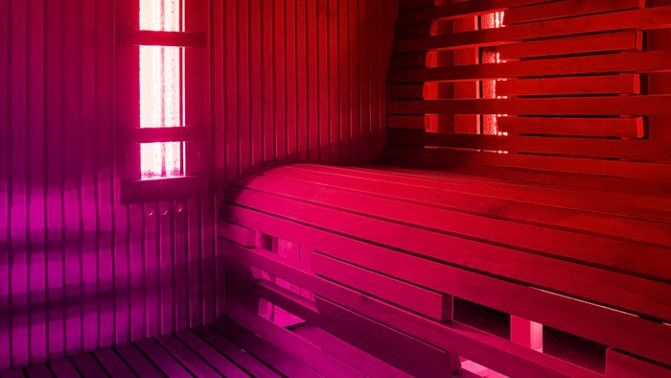
Infrared saunas are very gentle on humans
- give softer heat;
- warm the body without heating and frying the air;
- work great at burning calories and fat, promote weight loss and have an anti-cellulite effect;
- cleanses the skin well, accelerates the healing of damage;
- improve the functioning of joints and the nervous system;
- normalize metabolism;
- energy efficient, even in comparison with electric fireplace saunas.
Attention! As with a traditional sauna, visiting an infrared sauna should be discussed with your doctor. Each type has its own contraindications and limitations.

